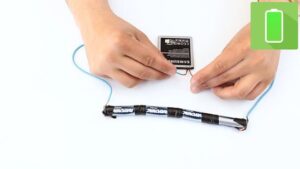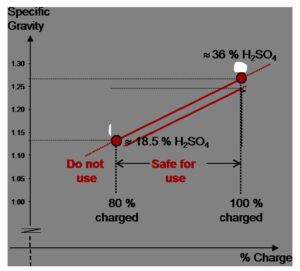How much power does a Tesla charger use? If you’ve ever wondered about the energy consumption of a Tesla charger, you’re in the right place. In this article, we will delve into the fascinating world of Tesla chargers and shed light on their power requirements. Whether you’re a Tesla owner or simply curious about electric vehicles, understanding the power usage of these chargers is essential. So, let’s dive right in and explore how much power a Tesla charger actually consumes.
How Much Power Does a Tesla Charger Use?
With the rising popularity of electric vehicles, many people are curious about the power consumption of charging systems. Tesla, known for its high-performance electric cars, offers a range of charging options to cater to different needs. In this article, we will explore the power requirements of Tesla chargers and delve into various factors that affect the charging process.
Understanding Tesla Chargers
Tesla vehicles can be charged using two primary types of chargers: the Tesla Mobile Connector and the Tesla Wall Connector. Both chargers provide different power levels for charging your Tesla, allowing you to choose the best option based on your charging requirements and available power supply.
The Tesla Mobile Connector is a portable solution that comes with every Tesla vehicle. It allows you to charge your car using a standard electrical outlet, commonly known as Level 1 charging. On the other hand, the Tesla Wall Connector provides faster charging speeds and is ideal for home installations or destinations like workplaces, hotels, and public charging stations, commonly known as Level 2 charging.
Level 1 Charging: Tesla Mobile Connector
The Tesla Mobile Connector, also known as the Universal Mobile Connector (UMC), is a versatile charging solution that enables Level 1 charging. Level 1 charging is the slowest method but can be useful when you have access to a standard electrical outlet. Let’s take a closer look at the power consumption of Level 1 charging:
- The Tesla Mobile Connector draws a maximum of 1.44 kilowatts (kW) of power when connected to a 120-volt outlet.
- At this power level, it adds around 3-4 miles of range per hour of charging to your Tesla.
- If you have a Tesla Model S with an 85 kWh battery, it would take approximately 56 hours to fully charge from empty using Level 1 charging.
- Level 1 charging is suitable for overnight charging or when you have ample time to charge your vehicle.
Level 2 Charging: Tesla Wall Connector
For faster charging, Tesla offers the Tesla Wall Connector, which requires professional installation. The Wall Connector provides Level 2 charging capabilities, allowing you to charge your Tesla at a higher power level. Here’s what you need to know about Level 2 charging:
- The Tesla Wall Connector can supply up to 48 amps of current, depending on the model and configuration.
- At a voltage of 240 volts, the maximum power output is approximately 11.52 kilowatts (kW).
- This translates to around 29-33 miles of range per hour of charging, depending on the specific Tesla model.
- For the same Tesla Model S with an 85 kWh battery, it would take around 7-8 hours to fully charge using Level 2 charging.
- Level 2 charging is ideal for daily charging needs or when you require faster charging times, such as at workplaces or public charging stations.
Factors Affecting Power Consumption
While it is important to understand the power levels of different Tesla chargers, it’s worth noting that the actual charging speed can vary due to several factors. Let’s take a closer look at these variables and how they affect power consumption:
Tesla Model and Battery Size
The specific Tesla model and its battery size play a crucial role in determining the power consumption during charging. Tesla offers a range of models, such as the Model 3, Model S, Model X, and Model Y, each with different battery capacities. Models with larger battery sizes will require more power to fully charge.
Charging Infrastructure and Electric Supply
The infrastructure and electric supply available at your location also influence the charging speed and power consumption. If you have a Tesla Wall Connector installed at your home or workplace, the power output will depend on the available electrical capacity. In some cases, you may need to upgrade the electrical system to support higher charging speeds.
Charger Settings and Cables
Tesla vehicles offer adjustable charging settings to cater to different charging scenarios. These settings allow you to control the maximum charging current, which can affect the rate of power consumption. Additionally, using the appropriate charging cables and connectors, such as the Tesla-supplied cables or certified third-party options, ensures efficient power transfer and minimizes power loss.
Ambient Temperature and Battery Condition
Extreme temperatures can impact the charging efficiency and power consumption of Tesla vehicles. Cold temperatures, for example, can reduce the battery’s capacity and increase internal resistance, resulting in slower charging speeds and higher power consumption. Similarly, extremely hot temperatures can affect the battery’s lifespan and may require additional cooling during charging.
Optimizing Your Tesla Charging Experience
To make the most of your Tesla charging experience and optimize power consumption, here are some tips to consider:
- Install a Tesla Wall Connector at your home or workplace for faster and more convenient charging.
- Ensure your electrical system can handle the increased power output of a Tesla Wall Connector.
- Take advantage of off-peak electricity rates to reduce charging costs.
- Monitor and manage your charging settings through the Tesla mobile app or vehicle controls.
- Consider using scheduled charging to take advantage of lower electricity rates and manage charging during specific time windows.
- Take care of your Tesla’s battery by avoiding extreme temperature conditions and following recommended charging guidelines.
Understanding the power consumption of Tesla chargers is essential for maximizing your charging efficiency and ensuring your Tesla is ready for the road. By considering the different charging options and factors that affect power consumption, you can make informed decisions when it comes to charging your Tesla. Whether you choose Level 1 charging with the Tesla Mobile Connector or opt for the faster Level 2 charging with a Tesla Wall Connector, it’s important to tailor your charging approach to your specific needs and available infrastructure. Remember, efficient and responsible charging practices will ensure a seamless and enjoyable electric driving experience.
Frequently Asked Questions
How much power does a Tesla charger use?
A Tesla charger typically uses 8.5 kW of power when charging a vehicle. However, the actual power consumption can vary depending on factors such as the specific Tesla model, the charging speed selected, and the state of the vehicle’s battery.
What is the power rating of a standard Tesla charger?
A standard Tesla charger, also known as a Level 2 charger, has a power rating of 240 volts and 40 amps. This equates to a power output of 9.6 kW, allowing for faster charging compared to a regular household outlet.
Can a Tesla charger use more power than the standard rating?
No, the power output of a Tesla charger is limited by its hardware and electrical specifications. The standard Level 2 charger is designed to operate at 240 volts and 40 amps, providing a power output of 9.6 kW. Higher power outputs would require specialized chargers or Tesla’s Supercharger network.
What is the power consumption of a Tesla Supercharger?
A Tesla Supercharger can deliver much higher levels of power compared to a standard Level 2 charger. Superchargers are capable of providing up to 250 kW of power, enabling faster charging times for Tesla vehicles.
Does the power consumption of a Tesla charger affect my electricity bill?
Yes, using a Tesla charger will increase your electricity consumption and can result in higher electricity bills. However, the exact impact on your bill will depend on factors such as the frequency and duration of charging, as well as your local electricity rates.
Final Thoughts
In conclusion, the power usage of a Tesla charger is a crucial aspect to consider for Tesla owners and those interested in electric vehicles. The charging speed and energy demand vary based on the specific Tesla model and the type of charger being used. To determine the power usage accurately, it is essential to consider the charging level, voltage, and amperage. Although a typical Tesla charger can draw approximately 7-11 kilowatts of power, it is worth noting that higher-powered chargers, such as the Tesla Supercharger, can provide even faster charging times by utilizing a higher voltage and amperage. Understanding how much power a Tesla charger uses is essential for efficiently managing one’s electric vehicle charging needs.




